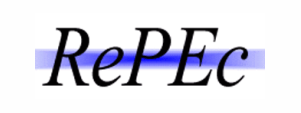Out-of-Pocket Expenditures for Health: A Case Study
Abstract
Background of the Study: Health is a prime component in rural population who uses their muscle power for doing economic activities. Meanwhile according to the Economic Survey of India’s 2021 report, India was among the 10 worst performing countries in terms of prioritising health in government budgets, at both state and central levels. India was placed or ranked in 67th in the list of 189 countries in Out of Pocket Expenditure per capita in PPP (in $) for 2018. World Health Organisation report (March 2022) stated that high of Out-Of-Pocket Expenditure (OOPE) on health is impoverishing some 55 million Indians annually, with over 17 per cent households incurring catastrophic levels of health expenditures every year. The Economic Survey 2023 reported that the share of government expenditure in Total Health Expenditure (THE) has increased over time from 28.6% in financial year 2014 to 40.6% in Financial Year2019. However, OOPE is still higher at 48.2% of the total expenditure.
Objectives: To explore the Out of Pocket Expenditure (OOPE) for health in India, Interstate and rural villages of Theni district, Tamil Nadu
Methodology: Purposive non random sampling was used to reach the sample element. Sample elements or respondents were from rural Theni District. Sample size was 300. Data was collected using an interview schedule in the catchment area of Primary Health Centre, taluk hospital and district healthcare hospital. Interview was conducted in Tamil and then the interview output was transcribed and translated into English, followed by a descriptive analysis. Ordinary Least Square estimation was used to find the implications of individual income on pocket out expenditure for health.
Findings of the Study: The secondary data from the website of World Health Organisation and from the reports of National Health Accounts reflects a difference in data information for every concerned period at least two to three per cent exist. The interstate data information for the period 2019 to 2020 revealed that the spending from government health care expenditure and out of pocket expenditure is not equal to total health care expenditure. Hence, the researcher made an attempt to explore the out of pocket expenditure among the rural population and their willingness to spend from their pocket. Furthermore, the impact of annual income and annual healthcare expenditure is examined by simple linear regression analysis, for to understand the role of income in shaping healthcare spending behaviour. The R Square value is very poor, and reflects the role of explanatory variable income is not impacting the out of pocket health care expenditure. The Keynesian theory of psychological law of consumption is invalid in out of pocket healthcare expenditure with respect to income of the respondents. 13 percentages of respondents were willing to do out of pocket expenditure for their health ailing. The 39.7percentages of respondents were disagreeing to do out of pocket expenditure for their health.
Conclusion: Overall, this study emphasizes the importance of understanding out-of-pocket health expenditures is increasing in rural (feckless management of public healthcare) with attitude of unwilling to pay from their pocket because of existing zero priced healthcare system, which is available in their near locality. Policy makers needs to concentrate on enhancing the healthcare supply such as medical personals, drugs, lab facility, beds, and in general in all aspects for to cater the demand of rural inhabitants and protect them from pushing into impoverishment.
Copyright (c) 2024 M. Chitra

This work is licensed under a Creative Commons Attribution-ShareAlike 4.0 International License.






